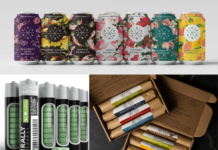
It’s a bit of a cliché, but your relationships are your biggest asset, in business and in life. In a marketplace with rapidly changing food preferences, restrictions, diets and ethical concerns around food production, one of your biggest challenges is figuring out how to deliver a product that solves enough problems for the right customers while building a strong relationship with them.
In addition to buying your products, there are some unique ways that customers can help your business grow. Many customers are also brand advocates. Having a strong brand and making it easy to tell the brand’s story makes it easier for your customers to tell your story to other potential customers and help you gain more revenue. But it doesn’t have to stop there. In some cases, customers can even help you finance the company through prepayments, crowdfunding and other means.
In our most recent podcast interview with Brendon Smith of the Willy Street Grocery Co-op, Brendon talks about how bringing its members into decision-making as part of cooperative governance has led to greater member loyalty and buy-in in a competitive and ever-changing grocery market. And, when Willy Street was expanding to new locations, the co-op financed much of the expansion with a bond offering to its members for as little as $500, adding another dimension to their engagement with their member owners.
Food entrepreneurship is a stressful endeavor, full of obstacles and roadblocks. No entrepreneur does it alone, and in addition to having a great team at the governance and management levels, the best food entrepreneurs develop deep enough relationships with their customers so that their customers become deeply invested in the company’s success.
And now, our roundup of the best food and beverage finance news, events and resources from around the web…
 Business Model Insights
Business Model Insights
- The Threefold Path of a Food & Beverage Startup (The Intertwine Group) – “If you are a founder or co-founder of an emerging food and beverage brand and you are not engaged in one or all of the following activities, you are in trouble:
- Preparing to effectively raise capital – It always winds up costing more money than one thinks to grow a brand. Regardless of whether you plan to bootstrap, fund through cash-flow, or have just successfully closed a financing round, you better prepare to raise more funds.
- Growth hacking – Done right, you are a mad scientist designing omnichannel experiments that validate product/market fit, prove velocity, and hopefully generate some needed revenue.
- Developing execution excellence and accountability – To grow quickly an organization must create a structure that can absorb and support that growth. Often overlooked, this is a vital activity.”
- Amazon is struggling to make online grocery profitable (Food Dive)
- How to disrupt the industry as a small business (New Hope Network)
Raising Capital
- How to find an investor (New Hope Network) – “Raising money from investors is hard. Really hard. Not only is it difficult to convince people to give you their money, but the overall process of raising money can be exhausting both mentally and emotionally. Investors are more inclined to be part of a company if other investors are already a part of it. Most investors have a herd mentality like this because it spreads risk and provides an external point of validation.”
- 3 Myths About SBA 7(a) Loans (Investors Community Bank)
- Make the most of a pitch slam by going beyond the presentation (Food Navigator USA)
 CPG/National Brands
CPG/National Brands
- Why consumers’ secretive brand choices are the ones that really matter (New Hope Media) – “New research suggests consumers who feel secretive about their consumption of a brand may actually have a stronger connection with said brand—and if used properly, that connection may be used to leverage the brand among other consumers.”
- How to Start Building and Documenting Your Brand Strategy (Real Food Brands Podcast)
- The Keys to Creating a New Category (Taste Radio Insider)
Market Trends
- 6 trends to impact the food industry in 2019 (Food Dive) – “Functional foods are going to become more refined and popular — especially with the potential addition of now-legal cannabinoid CBD. More big M&A deals — as well as many small ones — will chart the course for where Big Food is heading next. Packaging and production will continue to be more earth friendly, and companies will be moving closer to fulfilling their sustainability pledges. Products will continue to roll out to meet consumers’ health and wellness desires, and plant-based meats will keep making a dent in the market.”
- Brick-and-mortar retailers projected to gain online grocery share (Supermarket News)
- 9 natural food, beverage and supplement trends for 2019 (New Hope Network)
 Farming and AgTech
Farming and AgTech
- Agtech is Useless if We Cannot Engage Farmers (AgFunder News) – “Improving the engagement model between agtech and agriculture is a critical challenge that, if solved, will benefit both communities. The folks on the agtech side of the equation have been trying, and will continue to try, to solve the problem because it is critical to their businesses. It doesn’t take very long for an agtech company to realize that they need to engage with experts and users in the agriculture industry. Whether for feedback, expertise, trials, or as customers, involving farmers is a must.”
- 2019 Another Challenge for Agriculture (Farm Bureau Newsline Podcast)
- How to get shoppers to value regenerative agriculture (New Hope Network)
 Deals/M&A
Deals/M&A
- The new acquisition targets of a changing marketplace (New Hope Media) – “The consumer staples sector has undergone tremendous change over the last two decades, and these changes only seem to have accelerated over the last five years. We see the impact of a fundamental shift in consumer behavior everywhere from the growth of club stores to the acquisition of Whole Foods by Amazon in 2017. The retail sector is under pressure from online competition and shifting consumer preferences, and the producers of these products are also under pressure to lower prices, increase innovation and create growth. Acquisition, or inorganic growth, is one method being employed by established and cash-rich companies to adapt to this changing marketplace.”
- From Campbell’s To Kellogg’s, Classic Brands Are Feeling The Crunch (NPR)
- Nutrition Capital Network Deal Download: December 2018 (New Hope Media)
 Industry Events
Industry Events
- FaBsafe Certificate®: Basic Food Safety Training (FaB Wisconsin) – $, 1/23 in Plymouth, WI
- Resilient Farms Conference (Compeer Financial) – $, 1/24 and 1/30 in Utica, IL and Lakeville, MN, respectively (Tera Johnson speaking at the latter)
- Chobani Incubator Spring 2019 Application (Chobani) – Free to apply, 1/31 Online Application Deadline
- 2019 Organic Vegetable Production Conference (Dane County Extension) – $, 1/31 – 2/1 in Madison, WI
- Farmland Access Bootcamp (Renewing The Countryside) – $, 2/9 in Newton, IA
- MOSES Organic Farming Conference 2019 (MOSES) – $, 2/21 – 2/23 in La Crosse, WI
- Expo West 2019 (New Hope Network) – $, 3/5 – 3/9 in Anaheim, CA
- Food Waste Policy and Practice (WasteCap) – $, 3/19 in Madison, WI
- Good Food Expo 2019 – $, 3/23 in Chicago, IL
- New Uses Forum 2019 (Agricultural Utilization Research Institute) – $, 3/27 – 3/28 in Minneapolis, MN
- Nosh Live Summer 2019 (Project Nosh) – $, 6/10 – 6/11 in New York, NY





